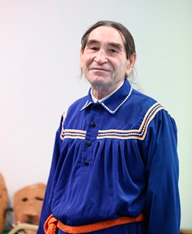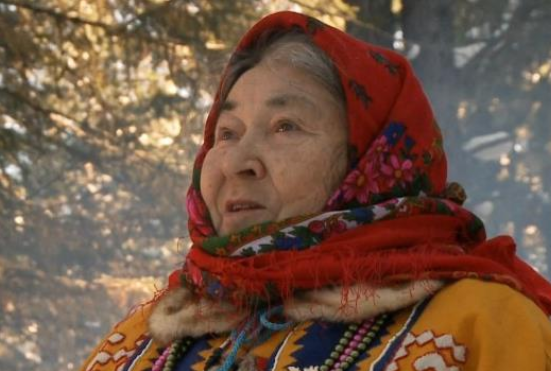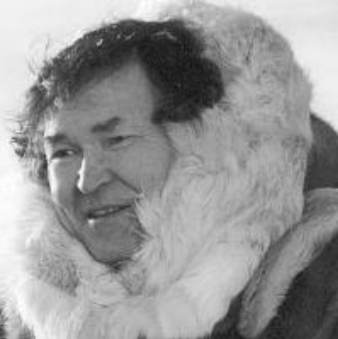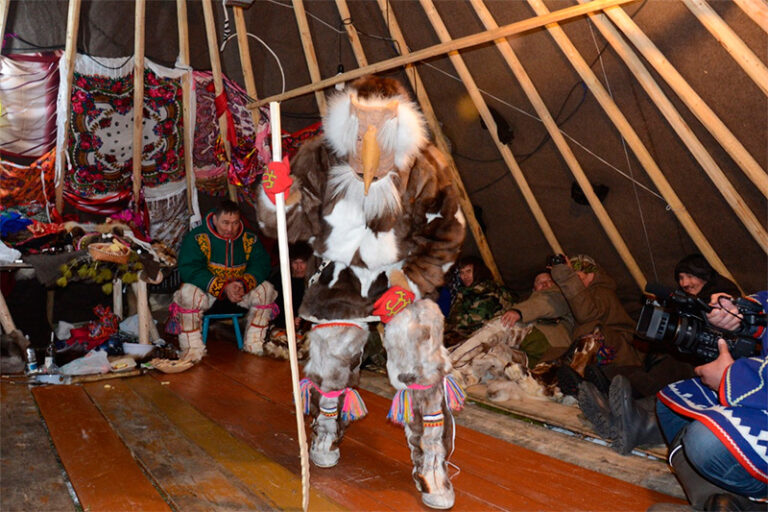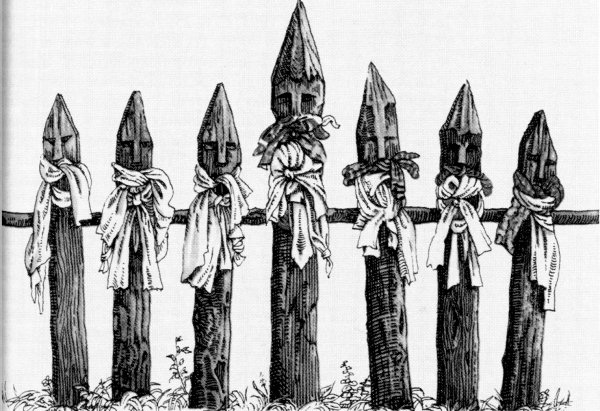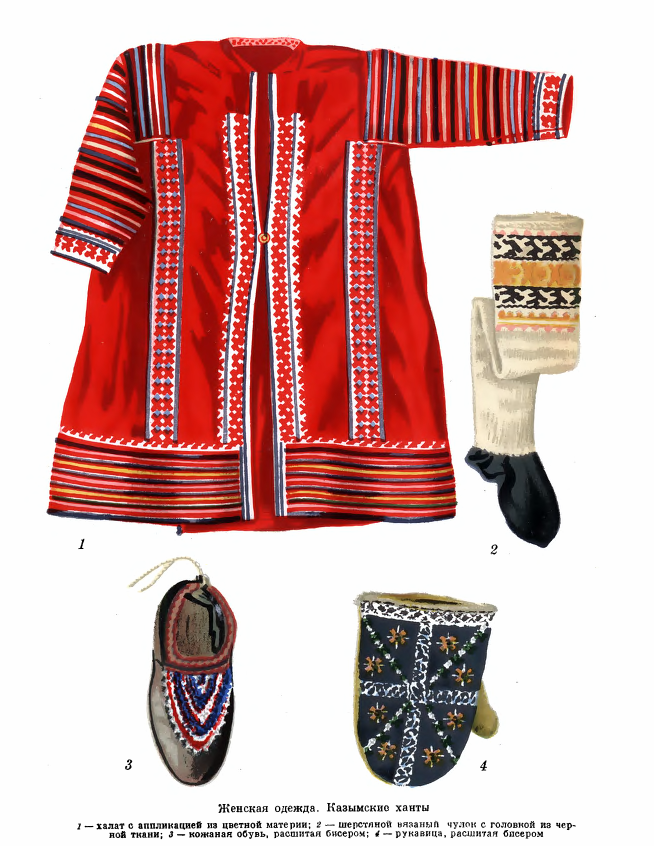Khanty

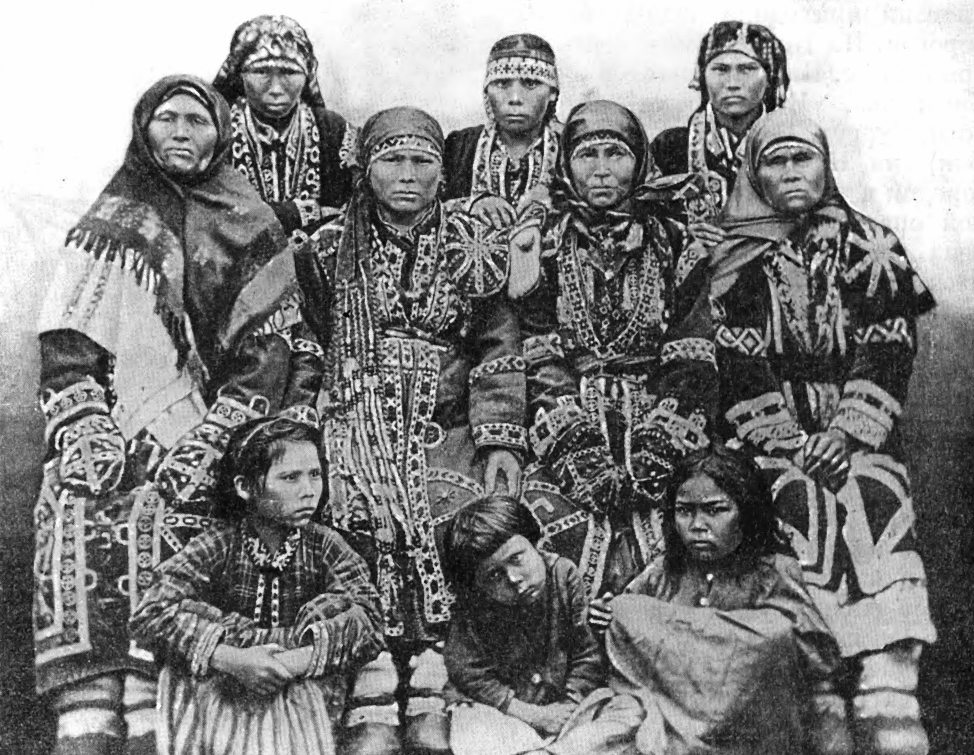
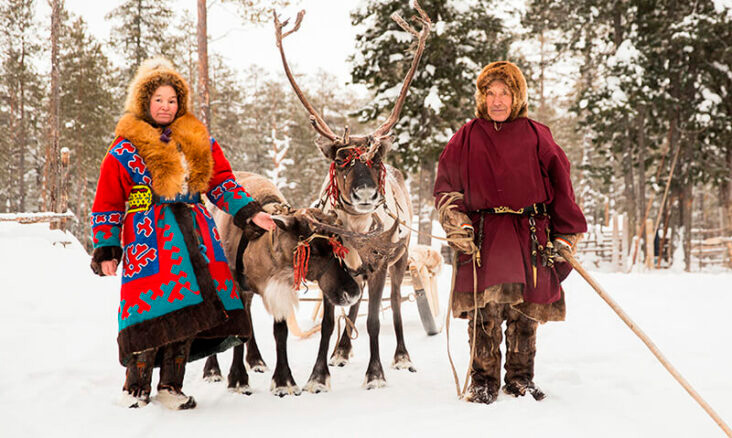
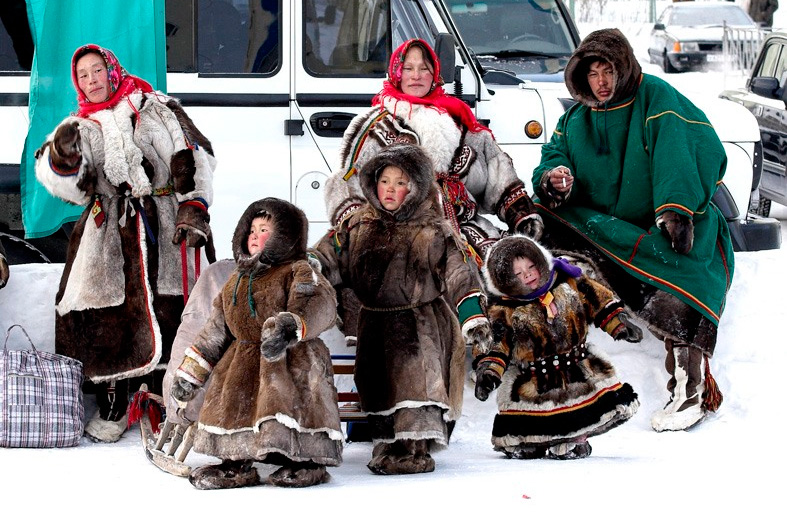
THE HISTORY OF THE ORIGIN OF THE PEOPLE
The Khanty are a people who have been living in the north of the Russian Federation since ancient times, mainly in the territories of the Khanty–Mansiysk and Yamalo-Nenets Autonomous Areas. Khanty is not the only name of this people. Until the beginning of the 20th century, the Khants were called Ostyaks (possibly from "As-yakh" – "the people of the big river"), even earlier (before the 14th century) – Yugra, Yugrichs. The name "Khanty" is formed from the self–designation "khante", "kanrakh" - a person, a people. According to the All-Russian Population Census of 2010, the Yamalo-Nenets Autonomous Area has a population of 9489 khants.
In historical chronicles, the first written mentions of the Khanty people are found in Russian and Arabic sources of the X century AD, but it is known for certain that the ancestors of the Khanty lived in the Urals and Western Siberia already in the 6-5 millennium BC, later they were displaced by nomads to the lands of Northern Siberia.
In an effort to strengthen its influence among the Khants, the Russian government planted Christianity among them, which was exclusively formal in nature and had almost no effect on traditional religious beliefs. Later, part of the Western Khants moved to the eastern and northern regions of Western Siberia. In the north, the Khanty came into contact with the Nenets and were partially assimilated by them. In the southern regions there were intensive processes of Turkization, and since the 18th century, Russification. In the 17th and 19th centuries, the nature of the life of the Khanty did not undergo significant changes. In the 2nd half of the 19th century, the Khanty gradually submitted to the national Russian legislation. By the 20th century, the Khanty people living in the southern regions of the Tyumen region were almost completely assimilated by Siberian Tatars and Russians. In the 20th century, the Khanty united into their own autonomy – the Khanty-Mansi Autonomous Area, which played an important role in the consolidation of the ethnic group, which intensified in the 1980s and 90s.
There are three ethnographic groups among the Khanty: northern, southern and eastern. They differ in dialects, self-designation, peculiarities in economy and culture. Also among the Khanty there are territorial groups – Vasyugan, Salym, Kazym Khanty.
LANGUAGE
The Khanty language belongs to the Ob-Ugric branch of the Finno-Ugric group of the Uralic family of languages. The vocabulary is mostly their own. There are Evenk, Nenets, Mansi and Selkup borrowings. The most intense linguistic influence on the Khanty language was exerted by the Komi language and the Russian language. The Khanty language is known for its extraordinary dialect fragmentation and is divided into three groups of dialects – northern, combining Obdorsky, Shuryshkar-Berezovsky, Kazymsky, Sherkalsky dialects, eastern with Surgut, Salym, Vakho-Vasyugan dialects and southern, including Atlymsky, Keushinsky, Irtysh-Kondinsky dialects.
WRITTEN LANGUAGE
The first attempts to create the Khanty script date back to 1868. In 1879, N. Grigorovsky published a primer in one of the dialects of the Khanty language.
In the 1930s, a writing system based on the Latin alphabet was created for the Obdorsky and Kazym dialects. In 1937, the writing system was translated into the basis of the Russian alphabet, and since 1940, the Middle Russian dialect has been the basis of the literary language. Due to dialect fragmentation, the reference written dialect was never chosen. As a result, a single literary language has not developed. There is no uniform spelling and grammatical norms in the Khanty script. Educational and artistic literature of the Khanty is produced in dialects: Kazym, Shuryshkar, Surgut, Vakhovsky. For most Khanty, the native language is a means of family and everyday communication, part of traditional culture.
TRADITIONAL HOUSEHOLD
The main occupations of the northern Khanty were reindeer herding and hunting, less often fishing.
The Khanty hunted reindeer, elk, bear, hare, squirrel, fox, sable and other fur–bearing animals; from birds - duck and goose. Active (pursuit of the beast with the help of dogs) and passive (various traps, crossbows and loops) methods of extraction were used.
Reindeer husbandry is widespread in most of the territory inhabited by the Khanty. In the forest area, reindeer husbandry is of local origin, has mainly a transport purpose. Free or semi-free grazing of deer is practiced..
The cult of the deer can be traced in all spheres of life of the northern Khanty. Deer, without exaggeration, was the basis of life: it was also a transport, skins were used in the construction of dwellings and tailoring. It is no coincidence that many norms of social life (ownership of deer and their inheritance), worldviews (in the funeral rite) are also associated with the deer.
Since the 19th century, the Khanty people living in the southern and central districts of the Tyumen region along the Ob River have been engaged in animal husbandry and vegetable growing.
Based on the fact that the economy affects the nature of settlement, and the type of settlement affects the design of the dwelling, five types of settlement with the corresponding features of settlements are distinguished among the Khants:
- nomadic camps with portable dwellings of nomadic reindeer herders (lower reaches of the Ob and its tributaries);
- permanent winter settlements of reindeer herders in combination with summer nomadic and portable summer dwellings (Severnaya Sosva, Lozva, Kazym, Vogulka, Lower Ob);
- permanent winter settlements of hunters and fishermen in combination with temporary and seasonal settlements with portable or seasonal dwellings (Verkhnyaya Sosva, Lozva);
- permanent winter fishing villages in combination with seasonal spring, summer and autumn (Ob tributaries);
- permanent settlements of fishermen and hunters (with the subsidiary importance of agriculture and animal husbandry) in combination with fishing huts (Ob, Irtysh, Konda).
https://travelask.ru/articles/2697-hanty-muzhestvennye-zhiteli-severa
TRADITIONAL DWELLING
Most of the Khanty people led a semi-sedentary way of life, moving from permanent winter settlements to seasonal ones located on fishing grounds. The Khanty, who were engaged in hunting and fishing, had 3-4 dwellings in different seasonal settlements, which changed depending on the season. Such dwellings were made of logs and placed directly on the ground, sometimes dugouts and semi-dugouts were built with a wooden post frame, which was covered with poles, branches, turf and earth from above.
Khanty reindeer herders lived in portable dwellings, in chums, consisting of poles placed in a circle, fastened in the center, covered with birch bark (in summer) or hides (in winter). The chum was also widely used as a seasonal dwelling at the place of crafts. Of the household structures, piled plank and log barns with gable or flat roofs, canopies-platforms are known.
The peculiarity of Khanty settlements is the installation of special poles in front of each house for tying deer and horses. Sometimes they were decorated with notches, images of human faces, animals and birds.
CUISINEThe main food of the Khanty is fish and meat. The fish was eaten raw, boiled, dried, frozen. Fish oil was melted from the entrails, flatbreads were fried on it, cooked varka (crushed fish boiled in fish oil), which was taken on the road and hunting, consumed with berries. They made fishmeal, from which they cooked a batter (boltushka). The main source of meat was large animals – elk and wild deer. Domestic deer were slaughtered for meat only by owners of large herds. Kidneys, liver, bone marrow, eyes, ears, lips, and sometimes meat were eaten raw, but usually meat was cooked. Upland fowl and waterfowl were eaten boiled or dried and smoked. Berries were mainly consumed from wild plants, and some plants were also harvested.
Mushrooms were considered "unclean", they were not eaten. The tradition of cooking some dishes from flour and cereals has deep roots among the Khanty, but bread has become widely used only recently. Drinks were water, a decoction of chaga and other vegetable decoctions. Many smoked, sniffed and sucked tobacco.
CLOTHING AND FOOTWEAR
Khanty clothes and shoes were sewn from deer fur, suede, colored cloth, decorated with beads. In the northern groups of Khanty, the upper men's clothing was dominated by the one worn over the head (malica, goose (sovik), parka), in the southern and eastern groups - swing. Men's shirts were made of nettle canvas, and trousers were made of rovduga (suede made of deer or elk hide), fish skin, canvas, cotton fabrics. A woven belt was necessarily worn over the shirt, to which beaded bags were hung (a knife in a wooden sheath and a flint were held in them).
Women everywhere wore swinging outerwear of various cuts. In winter, they wore a fur coat made of deer skin; the lining was also fur. Where there were few deer, the lining was made from hare and squirrel skins, and sometimes from duck or swan down. In summer, they wore a cloth or cotton robe decorated with stripes of beads, colored cloth and tin plaques. These plaques were cast by women themselves in special molds made of soft stone or pine bark. The belts were tighter than men's and more elegant.
Women both in winter and summer covered their heads with shawls with a wide border and fringe. In the presence of men, especially older relatives of her husband, it was traditionally supposed to cover her face with the end of a handkerchief. Headbands embroidered with beads also existed among the Khanty.
In general, the clothes of the Khanty, especially women, were distinguished by bright colors. Nenets pimas made of camus with a fur stocking serve as winter shoes. The summer one was made of rovduga (suede made of deer or elk hide), and the sole was made of elk leather. Men's and women's clothing is decorated with embroidery, beads, applique.
It was not customary to cut hair before. Men, having divided their hair into a straight parting, gathered them into two tails and tied them with a colored cord. Women braided two braids, decorated them with colored lace and copper pendants. At the bottom of the braids, so as not to interfere with work, they were connected with a thick copper chain. Rings, bells, beads and other ornaments were suspended from the chain. The women of the Khanty, according to custom, wore a lot of copper and silver ruts. There were also widespread jewelry made of beads, which was imported by Russian merchants.
https://travelask.ru/articles/2697-hanty-muzhestvennye-zhiteli-severa
RELIGION
Despite the Christianization in the 18th and 19th centuries, the Khanty adhere to traditional beliefs. In the people's life are widespread a commercial cult, veneration of patron spirits and the main gods – Torum and his wife Kaltash..
Since ancient times, the Khanty have revered the elements of nature: the Sun, the Moon, fire, water, wind. The Khanty also had totemic patrons, family deities, and ancestral patrons. Each clan had its own totem animal, it was revered, considered one of the distant relatives. This animal could not be killed and eaten.
The bear was revered everywhere, he was considered a defender, he helped hunters, protected from diseases, resolved disputes. At the same time, the bear, unlike other totem animals, could be hunted. In order to reconcile the spirit of the bear and the hunter who killed him, the Khanty arranged a bear festival. The frog was revered as the keeper of family happiness and the helper of women in labor. There were also sacred places, the place where the patron lives. Hunting and fishing were prohibited in such places, since the animals are protected by the patron himself.
To this day, traditional rituals and holidays have come down in a modified form, they have been adapted to modern views and timed to certain events. For example, a bear festival is held before issuing licenses for hunting a bear.
FOLKLORE
The Khanty designate various folklore genres in their own way. For example, they call fairy tales mon's', and songs – arykh. Folk tales include legends about the origin of the earth, about the flood, about traveling to different worlds, about the transformation of heroes into spirits, and so on. Narratives and songs about folk heroes (heroes) and animals occupy a significant place. Often in fairy tales, real-life or existing settlements are mentioned.
Ornament is widely used in people's folklore. The heroes of the images usually become local animals, various everyday scenes, rituals, and so on. Images can be found on clothes, household items and even on the body (tattoos).
Articles




